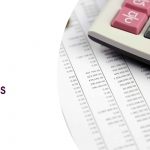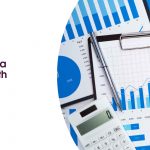Inventory Accounting Methods Simplified
Inventory is a business asset, and must be given as much attention as one would give sales or marketing. It can quite easily be called the backbone of a company – the stronger it is, the longer your brand name will last.
Anything considered that important must have value – and that’s where inventory accounting comes into play.
What is Inventory Accounting?
Inventory Accounting is the process of assigning value to all products comprising your inventory; this includes raw materials, work-in-progress and final products that exist on-site. This way, accountants seamlessly give your inventory items monetary value, which is vital to create accurate financial statements.
This can be tricky for most product-reliant businesses, especially because value for identical goods present on hand carry different prices with time. Therefore, a lot of care has to be put in to pick the right accounting method.
Fortunately for you, we have briefed the most important inventory accounting methods, so that you don’t have to stress valuable time away!
FIFO Method
This stands for “First In, First Out” – and it’s pretty self-explanatory. In this method, an assumption is made that the first goods purchased are also the first goods sold. This way, companies use up the oldest items first, ensuring that they don’t grow obsolete or dusty. Simultaneously, it also ensures that the items in stock are always the latest ones.
For most companies, the “first in, first out” approach is a logical one; since their inventory movement aligns so well with the FIFO method, it is often the most common accounting method to choose.
Weighted Average Accounting Method
This method assigns an average cost of production to the product itself. It is most commonly used for companies that have a higher degree of identical products, making it nearly impossible to assign a value to a single unit. It incorporates the cost of new inventory purchases into the cost of existing inventory to determine a new weighted average cost.
It works because not only does this cost reflect a cost somewhere between that of the oldest and newest units sold, it also records a total amount of inventory that falls between the oldest and newest units purchased or manufactured.
Specific Identification Method
Here, companies identify each item sold and each item remaining in a company’s inventory. Accountants then charge the specific cost of an item to the cost of goods sold, after selling that item. It is tedious, and requires a lot of data tracking. For that, it works best for companies that sell high-cost items, and which have enough time and resources to use.
We’ve pretty much briefed all that you need to know about inventory accounting methods. But no matter how advanced a method you pick, you’ll also need an inventory management software to support you.
A good inventory management software in Pakistan is Oscar POS, which lets you predict future inventory requirements through automatic low stock alerts and regular updates. What’s better, is that all your data is stored securely on the cloud, so that you can manage your inventory from anywhere, at any time.
Once you’ve gotten maximum control over your inventory with smart accounting techniques, then you’re ready to excel in the business world.








